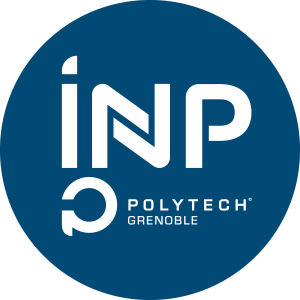Number of hours
- Lectures 1.0
- Projects -
- Tutorials 6.0
- Internship -
- Laboratory works -
- Written tests -
ECTS
ECTS 0.65
Goal(s)
Discover techniques for the construction of large structures combining geotechnics and public works
Describe precisely the entire organization of the work (phasing, cost, techniques, uses, constraints, etc.)
Content(s)
This Course is driven by a project-based learning :
Part 1 = 1 week tour work sites :
Visit of a dozen of work sites
- Presentation of the site by the engineers working on the site (speakers, schedule , cost , human material, etc.).
- Visit of the site with the same engineers (often geotechnical and civil engineer )
- Back to the room for detailed discussions :
o around the design calculations and assumptions ( geomechanical soil parameters , hydrogeotechnical , structural materials )
o organizational (excavation,
treatment, disposal , recycling)
o managerial management ( on / co contractors , team leaders , customer hierarchy)
o contract ( type of contract , damages ) - End of the week
o Constitution of student groups
o Assignment of two sites per group
o Sharing of data on the visited sites : notes assumptions , calculations, soil report , execution plans ( formwork reinforcement ) AutoCAD
o Sharing of personal data , photos, videos, notes taken
Part 2 = 3 days: restitution: HGET9G3C visits sites
- resume as accurately as possible of the job data
- Presentation of a written report
- Preparation of the defense
Part 3 = 7 days variants: HGET9G3D Studies and methods
Tutors modify the context of the work site by playing one or more of the following parameters: - Geotechnical (modification of soil parameters )
- Hydrogeotechnical (changes of permeability , discharge , position and / or presence of a water surface, dam effect)
- Environmental ( river, pore pressure
distribution ) - Geographic ( presence of surrounding or neighboring structures )
- Topographic (changing the slope )
- Legislative ( anchors prohibited outside of the site)
- Structural ( less or more storeys of floors, changing the lowering loads)
The group should then present the realization of this work , based on - The guidance of tutors
- The technical journals
- Internship Reports and previous reports
- Internet
- Computer software
- Software Business
- Unique and innovative solutions
Detailing the following: - Assumptions
- Notes calculations
- Design of structures ( interim / final )
- Planning ( Gantt , smoothing load curves )
- Cost (or cost - ) variant
- Human resources
- Resources
At the end of the third week, the groups present their work during a one-hour oral examination in the presence of tutors and students in other groups.
GGC3
Soil mechanics
Physical identification of soils
Material resistance
Work technique
Eurocodes
Land hydraulics
Technical drawing
Information technology
GGC4
Management
Plaxis Talren Robot
Reinforced concrete structures
Soil modelling
Support structures
Slope stability
Application of finite elements
RAP, SOUT
The course exists in the following branches:
- Curriculum - GGC - Semester 9
Course ID : KAGG9M07
Course language(s): 
You can find this course among all other courses.



